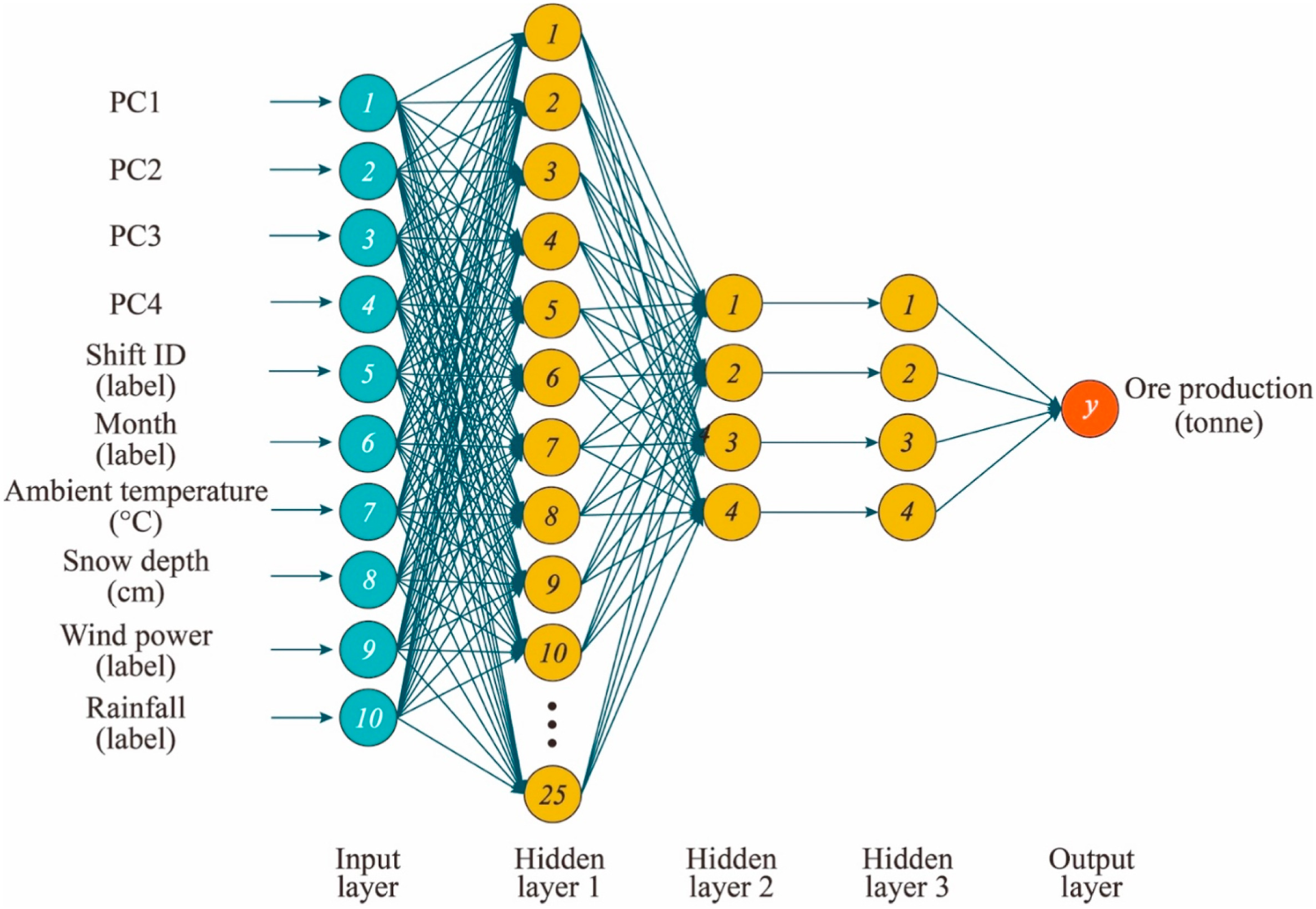JRMGE / Vol 16 / Issue 3
Using deep neural networks coupled with principal component analysis for ore production forecasting at open-pit mines
Chengkai Fan, Na Zhang, Bei Jiang, Wei Victor Liu
Show More
a Department of Civil and Environmental Engineering, University of Alberta, Edmonton, Alberta, T6G 2E3, Canada
b Department of Mathematical and Statistical Sciences, University of Alberta, Edmonton, Alberta, T6G 2G1, Canada
2024, 16(3): 727-740. doi:10.1016/j.jrmge.2023.06.005
Received: 2023-01-05 / Revised: 2023-04-12 / Accepted: 2023-06-15 / Available online: 2023-07-23
2024, 16(3): 727-740.
doi:10.1016/j.jrmge.2023.06.005
Received: 2023-01-05
Revised: 2023-04-12
Accepted: 2023-06-15
Available online: 2023-07-23
Ore production is usually affected by multiple influencing inputs at open-pit mines. Nevertheless, the complex nonlinear relationships between these inputs and ore production remain unclear. This becomes even more challenging when training data (e.g. truck haulage information and weather conditions) are massive. In machine learning (ML) algorithms, deep neural network (DNN) is a superior method for processing nonlinear and massive data by adjusting the amount of neurons and hidden layers. This study adopted DNN to forecast ore production using truck haulage information and weather conditions at open-pit mines as training data. Before the prediction models were built, principal component analysis (PCA) was employed to reduce the data dimensionality and eliminate the multicollinearity among highly correlated input variables. To verify the superiority of DNN, three ANNs containing only one hidden layer and six traditional ML models were established as benchmark models. The DNN model with multiple hidden layers performed better than the ANN models with a single hidden layer. The DNN model outperformed the extensively applied benchmark models in predicting ore production. This can provide engineers and researchers with an accurate method to forecast ore production, which helps make sound budgetary decisions and mine planning at open-pit mines.
Keywords: Oil sands production, Open-pit mining, Deep learning, Principal component analysis (PCA), Artificial neural network, Mining engineering
Article Data
Author(s) Information
Chengkai Fan

Chengkai Fan is a PhD candidate at the Department of Civil and Environmental Engineering, University of Alberta, Canada. He holds a BSc degree in geological engineering from the Anhui University of Science and Technology, China (2016) and an MSc degree in geotechnical engineering from the University of Chinese Academy of Sciences, China (2019). His research focuses on CO2 storage, rock mechanics and core flooding, fiber optic technology, and machine learning applications in geotechnical and mining engineering.

